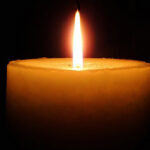[portfolio_slideshow]
Nineteen years after it was divided following Israel’s War of Independence, Jerusalem was reunified as a result of the Six Day War. The liberation of Jerusalem in 1967 marked the first time in thousands of years that the entire city of Jerusalem, Judaism’s holiest city, was under Jewish sovereignty.
The battle of Jerusalem began on the morning of June 5, 1967 when the Jordanians opened fire along the entire cease-fire line. By that afternoon the Jordanians occupied the Governor’s Palace. The Central Command of the Israeli Army, under the command of General Uzi Narkiss, moved the “Har’el” brigade to the Jerusalem front. This force tore through the enemy positions of “Har Adar” and “Abdul Aziz” and conquered “Nebi Samuel.”
By the morning of June 6, this force reached the Jerusalem-Rammalah road and stormed “Tel-El” and “Givat HaMivtar.” In addition a paratroop brigade was moved up. Its instructions were to open the way to Mount Scopus and the Rockefeller Museum in order to position themselves to break through to the Old City of Jerusalem on very short notice. This force cut through the frontline of the town and occupied the Police Academy, Ammunition Hill, Mandelbaum Gate, the American quarter and “Wadi Jos.” The way to Mount Scopus was now cleared and the northeast section of Jerusalem was liberated.
On June 7, the order was issued to liberate the “Old City.” The paratroop brigade that had conquered the Mount of Olives and the Mount Scopus ridge broke through to the Old City by way of the Lions’ Gate and hoisted the Israeli flag over the Western Wall – the last surviving remnant of the Second Temple.
Following the Six Day War, the Israeli Knesset approved the unification of the city of Jerusalem and adopted a law that allowed free access to its holy places by the members of every religion. In 1980, the Knesset adopted a law naming Jerusalem as the capital of Israel.
After the Six Day War the city and its environs underwent an intensive and unprecedented process of restoration and development. Institutions were built, entire new neighborhoods were established and an extensive system of roads and transportation infrastructure was constructed. Today, Jerusalem stands as an inspiration not only to residents of Israel and the Jewish people but also to the entire world. Jerusalem attracts tourists from around the world who come to see her beauty, to imbibe of her past and make pilgrimage to the holy sites, which serve as a place for prayer and a connecting point for the members of all three major religions.
On May 12, 1968 the Israeli government declared this day Jerusalem was liberated — the 28th day of the Hebrew month of Iyar — to be “Yom Yerushalayim” (Jerusalem Day) — a national holiday celebrating the continued historical connection of the Jewish people to Jerusalem.
The observance of Yom Yerushalayim outside of the city cannot compare to its celebration in reunited Jerusalem. In Jerusalem, thousands of people march around the city and walk through the liberated Old City, where Jews were denied access from 1948-1967. The march ends at the Kotel – the Western Wall — one of the remaining retaining walls surrounding the Temple Mount, the holiest site in Judaism. Concerts and celebratory dancing mark the day.








 Southern New England Jewish Ledger
Southern New England Jewish Ledger









